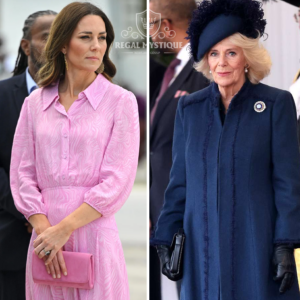Contrasting Attitudes: Caitlin Clark and Angel Reese in the Spotlight

In the realm of professional sports, attitudes towards media attention can vary significantly among athletes. Caitlin Clark, known for her exceptional skills on the court, maintains a focused and team-oriented approach when interacting with the press. Unlike many of her peers, Clark refrains from criticizing fellow players in public forums, choosing instead to concentrate on her team’s performance and her own contributions to the game.
Recently, Clark’s conduct has come under comparison with that of Angel Reese, another prominent figure in the sporting world. Unlike Clark’s reserved demeanor, Reese has displayed a noticeable envy towards the attention and endorsements garnered by her fellow athletes, particularly Caitlin Clark. Reese’s public remarks often highlight her dissatisfaction with what she perceives as a disproportionate distribution of fame and support in the sports community.
Clark’s stance reflects a commitment to professionalism and sportsmanship, focusing on elevating her team’s achievements rather than engaging in rivalry or jealousy. Her approach has not only earned her respect among fans and peers but has also contributed to a positive team dynamic and a supportive environment within her organization.
On the other hand, Reese’s outspoken expressions of envy underscore broader issues within professional sports, where the pressures of fame and commercial endorsements can sometimes overshadow the spirit of athletic competition. While both athletes excel in their respective fields, their contrasting attitudes towards media attention serve as a poignant reflection of the diverse personalities and values present in the sports industry today.
As the season progresses, the spotlight on Caitlin Clark and Angel Reese continues to illuminate not only their on-court performances but also their distinct approaches to navigating the complexities of fame and recognition in sports. Their contrasting perspectives offer valuable insights into the evolving dynamics of media relations and personal conduct in professional athletics.
News
Kate Middleton’s ‘heartbreak’ over William’s decision about their family’s future……
William, 41, and his brother Prince Harry, 39, previously attended Eton College, which broke the tradition of the older generation, including his dad the King, of attending a boarding school in Edinburgh Kate Middleton is “heartbroken” after an “argument” with Prince William over…
Shocking Claim: Queen Camilla & Kate Middleton Rumors Confirmed – Did She Really Do This?
Queen Camilla has become a very popular royal family member. When she and Prince Charles began dating and later married, the public was still outraged with her as she had been Charles’s mistress during his marriage to Princess Diana. However,…
Prince William Views Prince Harry as ‘Background Noise’ Amid Rift Over Explosive Memoir
Prince William is said to consider his brother Prince Harry as “background noise” after the younger brother released an explosive memoir. Prince William is reportedly “keeping his family away” from his brother due to a long-running rift between the pair. (Image:…
Prince Harry and Meghan Markle ‘insensitive’ for business ventures amid family turmoil, says royal expert
File image of Britain’s Prince Harry and Meghan, Duchess of Sussex attending the Royal Salute Polo Challenge charity match in Wellington, Florida on April 12(Reuters / Marco Bello) Prince Harry and Meghan Markle are facing backlash for their recent business…
Meghan Markle accused of treating California life like ‘prom event’ by ‘setting up’ shows to attend with Prince Harry
A royal expert has accused Meghan Markle of treating her life in Montecito, California like a “prom event,” and Prince Harry like “the prom king.” A royal expert has accused Meghan Markle of treating her life in Montecito, California like a “prom…
Princess Charlotte’s Boss Moment With Prince George Caught on Camera
Princess Charlotte telling Prince George “you need to bow” went viral on TikTok as she was praised for being “such a boss.” The young royal, nine, was seen giving her older brother, who turns 11 this month, some pointed advice on the day of Queen…
End of content
No more pages to load






